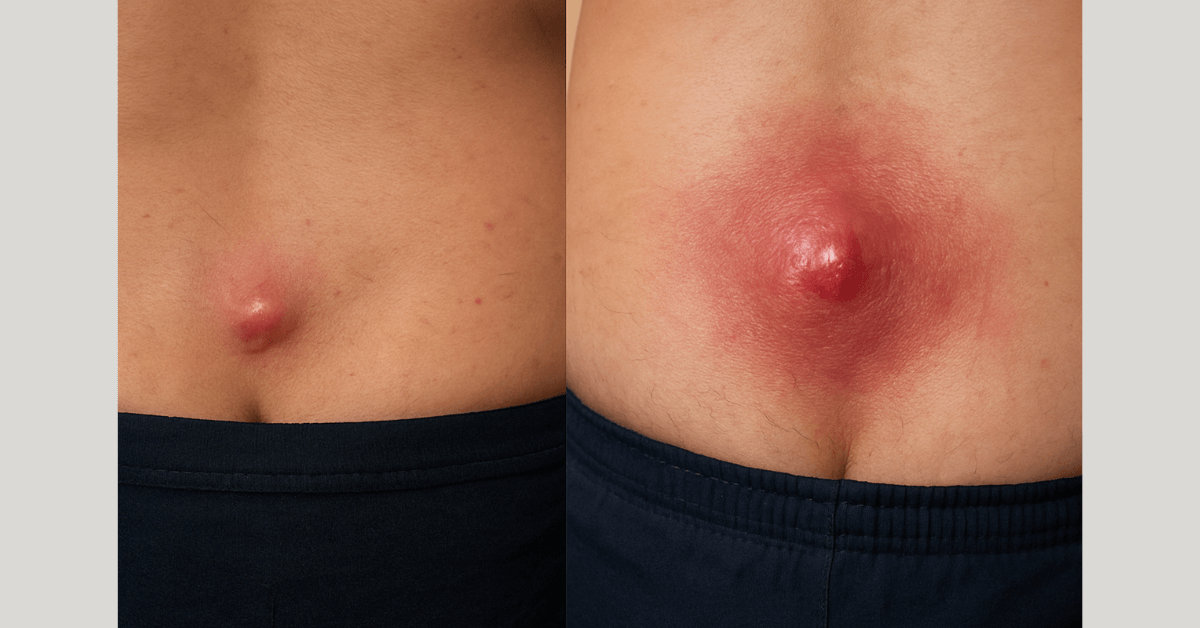If you’ve been diagnosed with an anal fistula, you may feel overwhelmed. The discomfort, occasional drainage, or even recurring infections can greatly affect your quality of life. Fortunately, today’s medical advances provide multiple treatment options. Among them, treatment for anal fistula has evolved to include modern, safe, and less invasive techniques like FiLaC, which uses laser energy to close the fistula tract.
Anal fistulas can vary in complexity, and so should their treatment. Although traditional surgery is still effective in many cases, newer procedures are reducing healing times, pain, and complications. This blog explores the causes, symptoms, and the most effective treatment for anal fistula, including the laser closure technique known as FiLaC.
We’ll guide you through all the essentials causes, symptoms, when to seek help, and how to choose the most suitable treatment.
Understanding Anal Fistula Causes
To fully understand the right treatment for anal fistula, it helps to know what causes this condition in the first place. An anal fistula is a small tunnel that forms between the anal canal and the skin around the anus. Most fistulas develop as a result of an infection in the anal glands. When these glands become blocked, an abscess can form. If the abscess fails to heal completely, it can lead to a fistula.
Common Anal Fistula Causes Include:
- Perianal abscesses: The most frequent trigger for fistula formation.
- Crohn’s disease: A chronic inflammatory condition that can damage intestinal tissues.
- Tuberculosis: Though rare in many regions, TB can still cause anal fistulas.
- Radiation therapy: Prior radiation for pelvic cancers may contribute to fistula formation.
- Trauma or injury: Direct injury to the anal area may also result in a fistula.
These causes vary from person to person. Therefore, an accurate diagnosis by a healthcare provider is crucial. Early diagnosis not only prevents complications but also improves the effectiveness of fistula treatment options.
Recognizing Symptoms of Anal Fistulas
Identifying the symptoms early can make a significant difference in selecting the right treatment for anal fistula. While some fistulas are obvious and painful, others may be less noticeable at first.
Common Symptoms to Watch For:
- Persistent anal pain: Especially during bowel movements or sitting for long periods.
- Swelling or redness: Around the anus, often accompanied by warmth.
- Recurring abscesses: Even after drainage or treatment.
- Foul-smelling discharge: Pus or fluid leaking from an opening near the anus.
- Fever and fatigue: These symptoms may indicate a spreading infection.
These signs should never be ignored. Even when symptoms seem minor, a fistula can worsen over time without proper care. That’s why early diagnosis and prompt action are critical steps in effective treatment for anal fistula.
When to Seek Medical Help
Although some individuals may try to manage symptoms at home, medical intervention is usually necessary. An untreated anal fistula rarely heals on its own and often leads to repeated infections or abscesses.
You should see a doctor immediately if you notice any of the following:
- Persistent drainage or pus
- Increased pain and swelling
- Recurring fever
- New abscess formation
- Symptoms of Crohn’s disease or another underlying condition
Prompt consultation helps prevent complications and ensures that you receive the most appropriate fistula treatment options. Doctors can also assess whether you may benefit from a minimally invasive procedure such as FiLaC.
Common Fistula Treatment Options
There are several types of treatment for anal fistula, each suited to different situations. Your doctor’s recommendation will depend on the fistula’s location, severity, and your general health.
1. Fistulotomy
This is the most common procedure. During a fistulotomy, the surgeon opens the fistula tract to allow it to heal from the inside out. While highly effective, this method may not be suitable for fistulas close to the sphincter muscle due to the risk of incontinence.
2. Seton Placement
For complex or deep fistulas, surgeons may use a seton—a surgical thread placed inside the tract. This method helps drain infection while minimizing the risk to surrounding muscles. Setons may remain in place for weeks or months depending on the fistula’s complexity.
3. Advancement Flap Surgery
Used for high or complex fistulas, this procedure involves closing the internal fistula opening using healthy tissue from the rectum. It preserves sphincter function and is ideal for fistulas that don’t respond to other treatments.
4. LIFT Procedure (Ligation of the Intersphincteric Fistula Tract)
This technique involves accessing the fistula between the internal and external sphincter muscles. The tract is tied off and removed. It offers good healing rates with lower risk of complications.
Each method offers different benefits and risks. For patients seeking a minimally invasive procedure, the next section covers a highly advanced method that’s gaining popularity.
Benefits of Minimally Invasive Procedure
Traditional surgery can be effective but may involve significant recovery time and risk of complications. For many patients, a minimally invasive procedure like FiLaC offers a better alternative.
Why Choose Minimally Invasive Treatment?
- Less tissue damage: The surrounding tissue remains intact.
- Reduced risk of incontinence: The sphincter muscles are preserved.
- Minimal scarring: Smaller wounds lead to better cosmetic and functional outcomes.
- Shorter recovery period: Most patients return to daily activities faster.
- Lower infection risk: A smaller surgical area reduces complications.
These benefits make laser-based approaches more appealing for those who qualify. Still, it’s important to discuss your options with a specialist.
FiLaC: Laser Closure Technique Explained
Among the newer treatment methods, FiLaC (Fistula-tract Laser Closure) stands out as a cutting-edge solution. This laser closure technique is especially effective for patients seeking a quick recovery with fewer complications.
What is FiLaC?
FiLaC is a minimally invasive procedure that uses a radial-emitting laser probe to deliver energy inside the fistula tract. The laser seals the tract from the inside, promoting tissue regeneration and closure. Because it does not involve cutting the tissue, patients experience less pain and faster healing.
How the Procedure Works
- Examination: The surgeon first evaluates the tract using imaging and physical examination.
- Cleaning: Any infection or debris inside the tract is cleaned and drained.
- Laser Application: A small probe is inserted into the tract. Laser energy is applied in controlled pulses while slowly withdrawing the probe.
- Closure and Recovery: The energy collapses and seals the tract, allowing natural healing to begin.
Advantages of FiLaC
- Preserves continence
- Minimizes postoperative pain
- Requires no external incision
- Suitable for both simple and complex fistulas
- Can be repeated if necessary
As with any procedure, results can vary based on individual anatomy and the fistula’s characteristics. However, FiLaC is increasingly viewed as a reliable, safe, and patient-friendly treatment for anal fistula.
Comparing Treatments and Recovery Time
It’s important to weigh your options carefully. Here is a simplified comparison of various fistula treatment options:
| Treatment Type | Invasiveness | Recovery Time | Continence Risk | Success Rate |
|---|---|---|---|---|
| Fistulotomy | Moderate | 4–6 weeks | Possible | High |
| Seton Placement | Mild to Moderate | Weeks to months | Low | Moderate |
| Advancement Flap | Moderate | 6–8 weeks | Low | High |
| LIFT Procedure | Moderate | 4–6 weeks | Low | Good |
| FiLaC | Minimally invasive | 1–2 weeks | Very low | Good to high |
Preventing Future Anal Fistulas
While not all anal fistulas can be prevented, certain steps can reduce the risk of recurrence:
- Treat underlying conditions: Especially Crohn’s disease or other bowel disorders.
- Practice good hygiene: Keeping the anal area clean helps prevent infection.
- Avoid constipation: A high-fiber diet and hydration make bowel movements easier.
- Follow up regularly: Attend all post-treatment appointments to catch any issues early.
Prevention plays an essential role in long-term health and helps support the success of your chosen treatment for anal fistula.
Conclusion: Treatment for Anal Fistula
Anal fistulas can be complex and challenging, but modern medicine provides reliable solutions. Whether you choose traditional surgery or opt for a minimally invasive procedure like FiLaC, the most important step is getting the right diagnosis and following professional medical advice.
With early detection, proper care, and access to newer treatments, full recovery is not only possible—it is likely. Make sure to talk with your healthcare provider about your symptoms, goals, and concerns.
Always consult your doctor before using any treatment or acting on medical advice shared in this blog.



